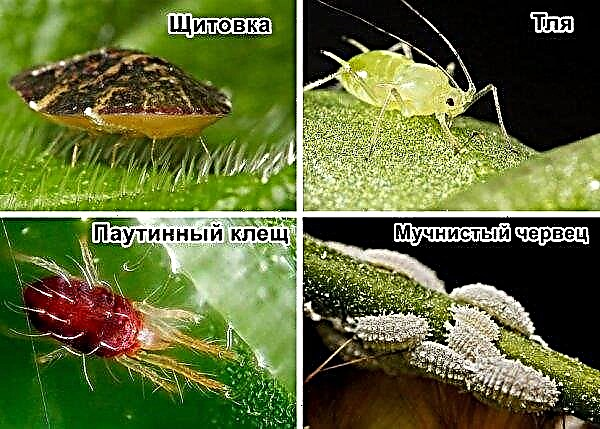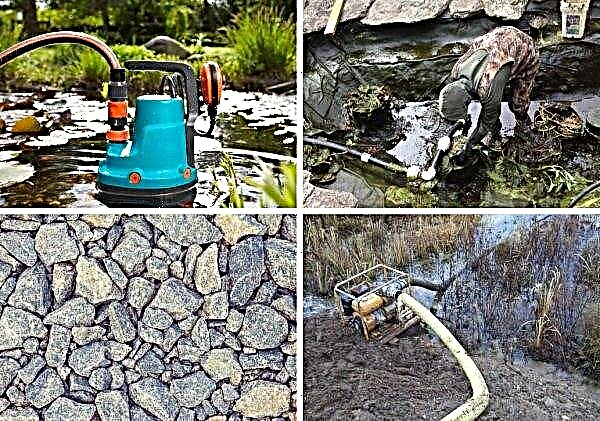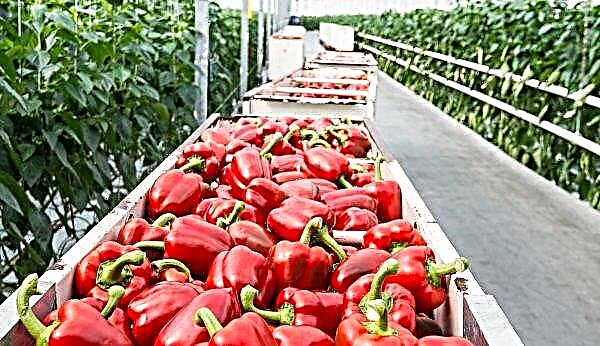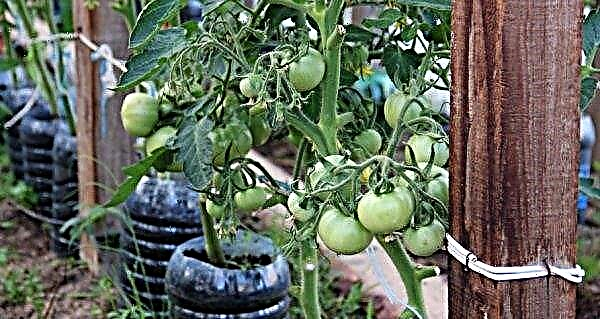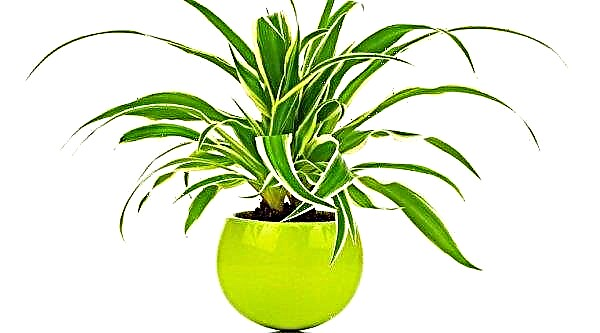To get early spring crops in a polycarbonate greenhouse, it is recommended to equip a heating. You can also heat the greenhouse in the autumn period, as this increases the vegetative period of the plant. Greenhouses are mainly connected to heating, the operation of which is put on a commercial basis. In the article, we consider what methods of heating a greenhouse exist, as well as their characteristics.
Electric air heater
It is an installation of electric fan heaters, which consist of a heating element in the form of a ceramic plate or spiral, as well as nearby fans. Due to this, air circulates inside the greenhouse and quickly heats up. Such heating is one of the most economical and easy to use. If necessary, you can provide air at the right level, which will save energy.
Important! Since a convection heater drains the air greatly, when using it, it is necessary to double the frequency of watering plants.
This view will allow you to evenly warm all surfaces, but does not warm the soil enough. The disadvantage of such a greenhouse is the need for a constant connection to the power supply, and when the heating is turned off, the greenhouse cools quickly. In addition, growing vegetables using this method is financially expensive, since such devices use a lot of electricity.
Infrared heating
Heating the greenhouse with infrared rays is the most economical among all electrical appliances. The essence of this method is that the rays pass unhindered through the air and heat surrounding objects. This makes it possible to reduce energy consumption and warm the plant, soil and objects in the room. The principle of operation of infrared heaters.
The principle of operation of infrared heaters.
Electric heating cable
This method allows first of all to perfectly warm the soil in the greenhouse. It is necessary to mount the installation even during the construction of the structure. For this, a heat-insulating material is placed on the site of future beds, on top of which there is a cable SN-15 and SN-18. They are fixed with adhesive tape and sprinkled with sand on top - a layer 5–6 cm high.
After that, a perforated sheet of asbestos cement and fertilized soil with a height of 35–45 cm are laid. Such a device contributes to the emergence of early seedlings of plants, and this is a fairly economical method of heating a polycarbonate greenhouse.
Furnace heating
Such heating is characterized by a simple construction technology, the ability to easily control the temperature and availability of fuel. For the construction of furnace heating in the greenhouse does not require large expenses. However, this heating method requires constant monitoring and is fire hazardous, and firewood or other fuel, if stored in a greenhouse, takes up a lot of space.
Did you know? For the first time, stove heating in a greenhouse on the territory of the Russian Empire began to be used at the beginning of the 18th century.
Long burning furnace
This heating option works on the principle of gas generation. This reduces the temperature of the walls of the furnace and saves heat. Due to the minimum supply of oxygen to the combustion chamber, the fuel does not burn, but smolders, so it is enough for a long period of time. A water circuit can be connected to the furnace, and due to its high heat transfer it is extremely economical and easy to operate.
Potbelly stove
The effectiveness of this heating method is very low. This furnace is built primarily of iron or another metal, therefore it is not able to retain heat in a greenhouse. The design of this structure is as simple as possible in construction and operation, and as fuel, you can use wood, coal or other types of easily combustible materials. A stove-potbelly stove for heating a greenhouse.
A stove-potbelly stove for heating a greenhouse.
Brick oven
It allows you to save a large amount of heat due to the property of the brick to absorb it. Such heating does not dry the air and is economical. However, the construction of a brick furnace will take a lot of time, and special calculations of the dimensions of the chimney are required to ensure efficient combustion. Right near the structure, the temperature may be too high, which will lead to the death of plants.
Water circuit oven
Such an oven helps to uniformly warm the entire room of the greenhouse, which will significantly save energy. For this purpose, it is better to use propylene pipes, since they are not afraid of corrosion and do not freeze in winter. The pipeline is carried out along the walls of the greenhouse even during its construction and connected to the furnace so that the water passing through it is heated to the desired temperature and spread across the water circuit of the entire greenhouse.
Important! Oven heating is rarely used in greenhouses built for commercial purposes, since it is not able to provide temperature stability, which negatively affects the yield.
Such a system requires a large investment in construction, but due to heat savings it quickly pays for itself. Greenhouse heating scheme: 1 - heating boiler; 2 - thermos tank; 3 - circulation pump; 4 - relay-regulator; 5 - registers; 6 - thermocouple.
Greenhouse heating scheme: 1 - heating boiler; 2 - thermos tank; 3 - circulation pump; 4 - relay-regulator; 5 - registers; 6 - thermocouple.
Emergency heating
The method is necessary in case of force majeure to save future crops in case of equipment malfunction or large frosts.
To do this, it is better to use:
- a metal pipe placed in one piece in a container;
- heat retaining bricks;
- combustible mixture.
The construction of the structure does not require much labor and skills and includes the following stages:
- Putting the free part of the pipe inside the greenhouse - the container should be outside.
- Insulation of the hole for the pipe in a polycarbonate film.
- Putting porous bricks inside a metal container.
- Processing bricks with a combustible mixture, usually kerosene.
- Ignition of a combustible mixture inside a container.
Video: emergency heating of the greenhouse
Alternative heating
It is used as the main one in a mild climate and can be an additional option that saves energy and resources in the northern regions. The use of such heat sources is environmentally friendly, but is not able to significantly increase the temperature of the air inside the greenhouse.
Did you know? An alternative method of heating greenhouses is the oldest — it was used still in ancient Rome.
Biological
This method allows you to get heat when decomposing organic material, such as manure, peat and household waste. Microorganisms living in biological material directly release energy, and they also contribute to the additional enrichment of the greenhouse with oxygen. It is important to choose the right biomaterial - for example, horse manure gives the greatest heat, warming the soil to 72 ° C. For the effective growth and development of plants, a greenhouse must be prepared 10-15 days before planting. At the same time, biofuel is scattered in a uniform layer of about 10 cm throughout the room and covered with a film, and the soil is poured on top. Such heating makes it possible to reduce financial costs and ensure consistently high yields.
For the effective growth and development of plants, a greenhouse must be prepared 10-15 days before planting. At the same time, biofuel is scattered in a uniform layer of about 10 cm throughout the room and covered with a film, and the soil is poured on top. Such heating makes it possible to reduce financial costs and ensure consistently high yields.
Solar power
An inexpensive and easy way to heat a greenhouse is to use sunlight. In order to take advantage of this source of energy, it is important to install the greenhouse in the right place, where there is most sunlight during the day. At the same time, the polycarbonate coating will create the desired greenhouse effect when the greenhouse is completely sealed. The most optimal for these purposes is a cellular polycarbonate film. The choice of a method for heating a greenhouse depends on its area, purpose of use, as well as the possibility of the constant presence of the vegetable grower and the supervision of the greenhouse. It is important to determine the method of heating the greenhouse during its construction, since some elements are mounted at this moment.
The choice of a method for heating a greenhouse depends on its area, purpose of use, as well as the possibility of the constant presence of the vegetable grower and the supervision of the greenhouse. It is important to determine the method of heating the greenhouse during its construction, since some elements are mounted at this moment.

